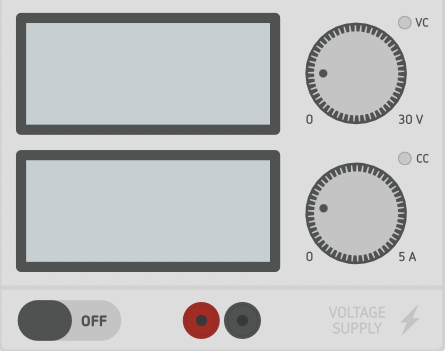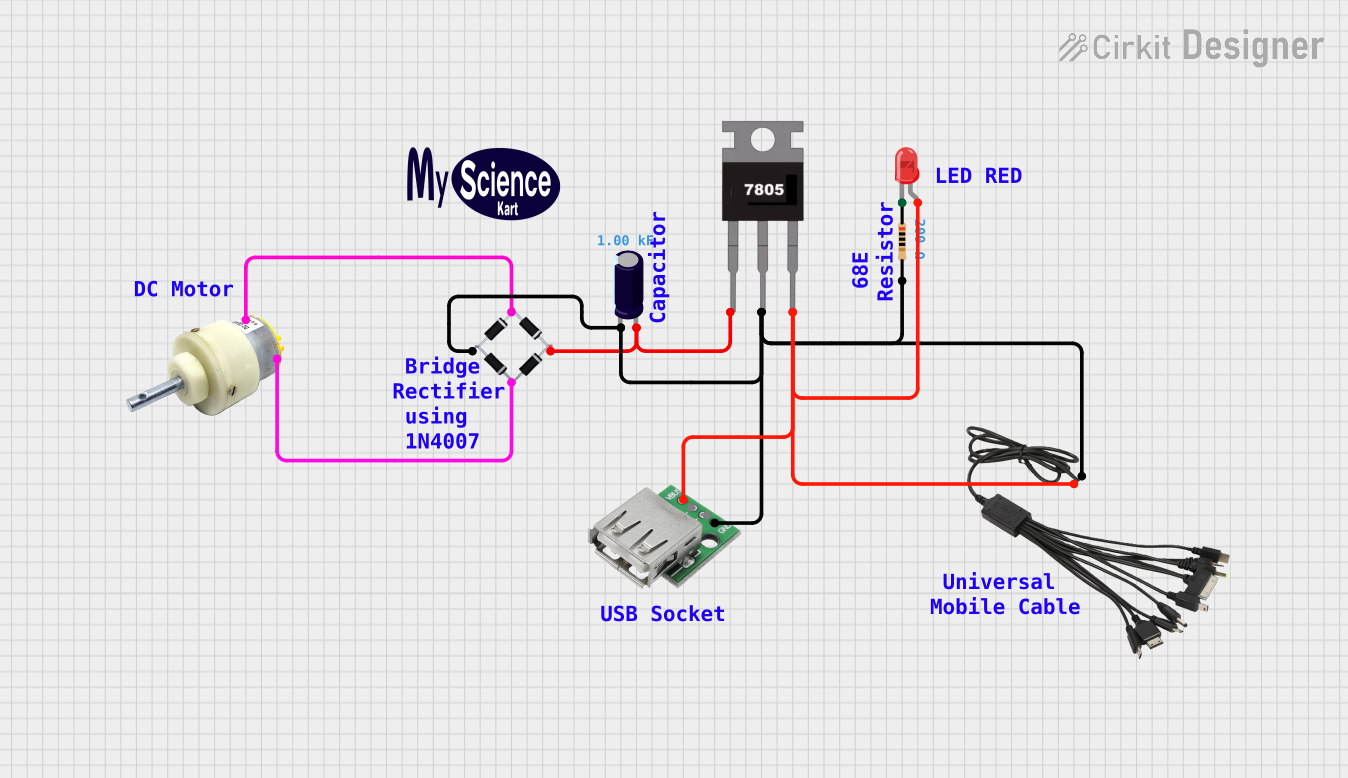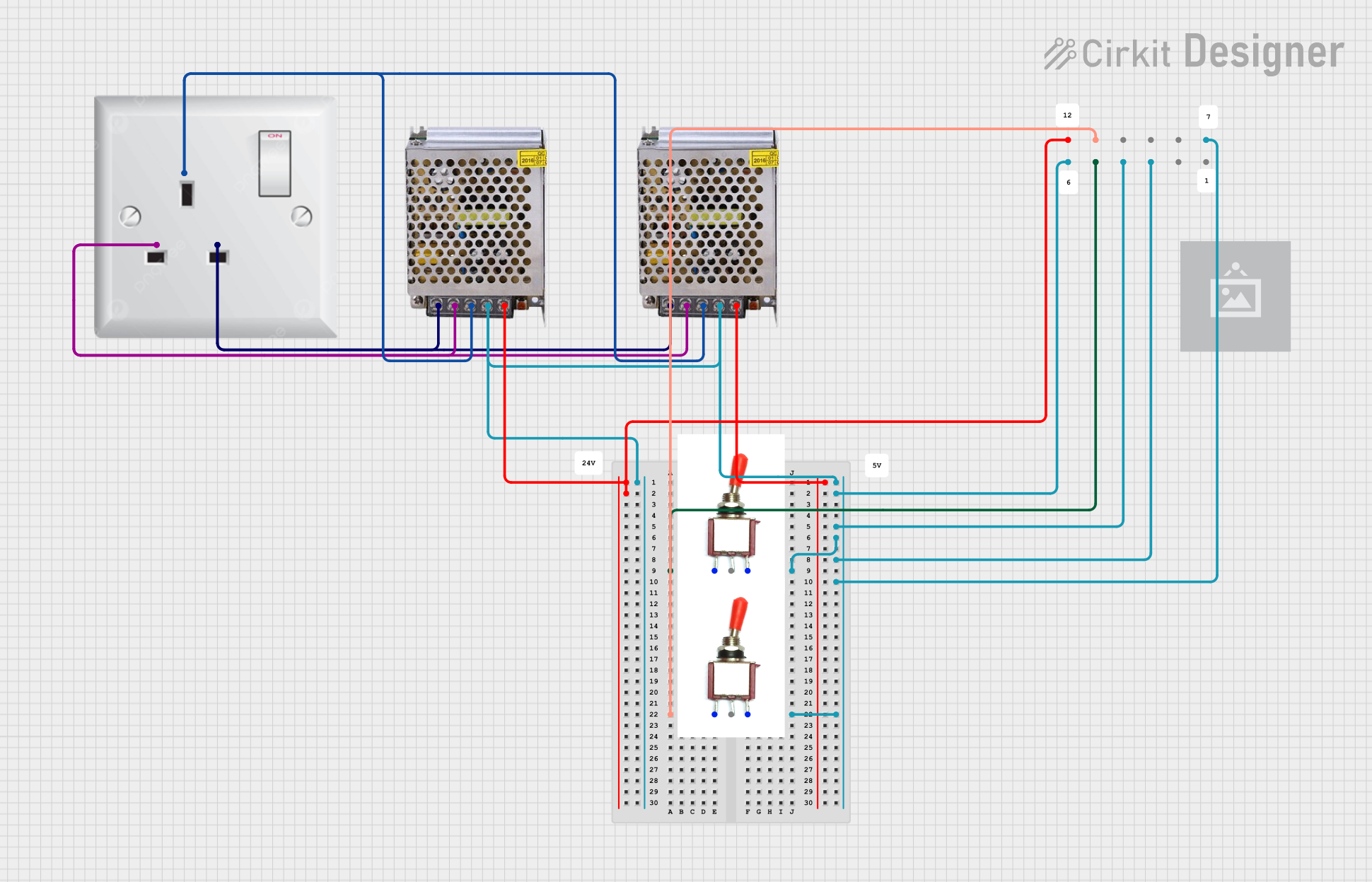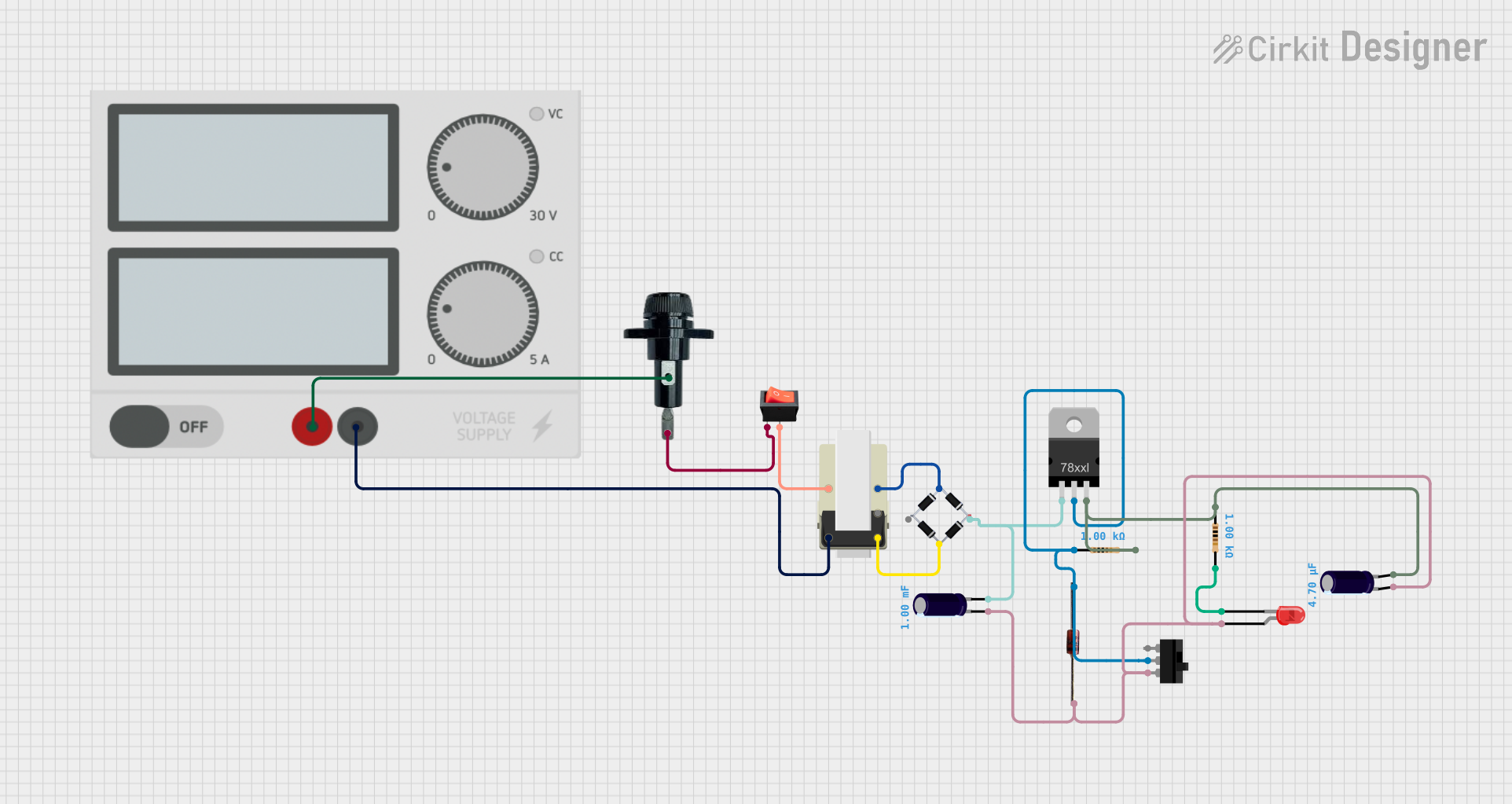
How to Use Power Supply: Examples, Pinouts, and Specs

 Design with Power Supply in Cirkit Designer
Design with Power Supply in Cirkit DesignerIntroduction
A power supply is an essential electronic component that converts electrical energy from a source to the correct voltage, current, and frequency to power the load. It is a critical part of any electronic system, providing the necessary power to operate various devices and circuits. Common applications include computer systems, industrial machinery, consumer electronics, and DIY projects involving microcontrollers like the Arduino UNO.
Explore Projects Built with Power Supply

 Open Project in Cirkit Designer
Open Project in Cirkit Designer
 Open Project in Cirkit Designer
Open Project in Cirkit Designer
 Open Project in Cirkit Designer
Open Project in Cirkit Designer
 Open Project in Cirkit Designer
Open Project in Cirkit DesignerExplore Projects Built with Power Supply

 Open Project in Cirkit Designer
Open Project in Cirkit Designer
 Open Project in Cirkit Designer
Open Project in Cirkit Designer
 Open Project in Cirkit Designer
Open Project in Cirkit Designer
 Open Project in Cirkit Designer
Open Project in Cirkit DesignerTechnical Specifications
Key Technical Details
- Input Voltage Range: This is the range of voltages the power supply can accept.
- Output Voltage Range: The range of voltages the power supply can deliver to the load.
- Current Rating: Maximum current the power supply can provide.
- Power Rating: The total amount of power the supply can deliver, typically in watts.
- Efficiency: A measure of how well the power supply converts input power to output power.
- Regulation: The ability of the power supply to maintain a constant output voltage under varying load conditions.
- Ripple and Noise: The amount of unwanted variation and spikes in the output voltage.
Pin Configuration and Descriptions
| Pin Number | Name | Description |
|---|---|---|
| 1 | AC_IN | Input pin for AC voltage |
| 2 | GND_IN | Ground reference for input |
| 3 | DC_OUT | Regulated DC output voltage |
| 4 | GND_OUT | Ground reference for output |
Usage Instructions
Integrating with a Circuit
- Connecting Input Power: Connect the AC_IN and GND_IN to your AC power source. Ensure the input voltage matches the specifications of the power supply.
- Connecting to Load: Attach the load to the DC_OUT and GND_OUT pins. Ensure the load does not exceed the power supply's current and power ratings.
- Powering an Arduino UNO: To power an Arduino UNO, connect the DC_OUT to the VIN pin and GND_OUT to one of the GND pins on the Arduino.
Important Considerations and Best Practices
- Voltage Matching: Always verify that the output voltage matches the requirements of your load.
- Current Limitations: Do not exceed the current rating of the power supply to avoid damage.
- Heat Dissipation: Ensure adequate ventilation around the power supply to prevent overheating.
- Short Circuit Protection: Use fuses or circuit breakers to protect against short circuits.
Troubleshooting and FAQs
Common Issues
- Insufficient Power Output: Check if the load exceeds the power supply's ratings.
- Overheating: Ensure proper ventilation and check if the load is too high.
- Voltage Fluctuations: Verify if the power supply's regulation is adequate for the load.
Solutions and Tips
- Reducing Load: Decrease the load to within the power supply's specifications.
- Improving Ventilation: Increase airflow or add additional cooling mechanisms.
- Using a Voltage Regulator: If the output voltage fluctuates, consider using an external voltage regulator for more stability.
FAQs
Q: Can I use this power supply with a 12V motor? A: Yes, as long as the motor's current and power requirements do not exceed the power supply's ratings.
Q: What happens if I connect a load with higher current than the power supply can provide? A: The power supply may overheat, shut down, or get damaged. Always use a load within the specified current limit.
Q: How can I tell if the power supply is not working properly? A: Check the output voltage with a multimeter. If it's outside the specified range, the power supply may be faulty.
Remember, safety first! Always follow electrical standards and regulations when working with power supplies.